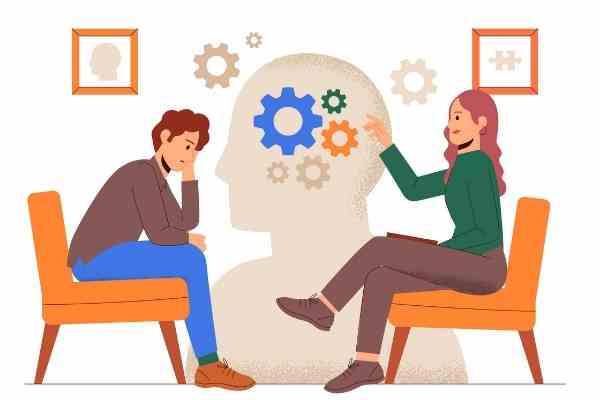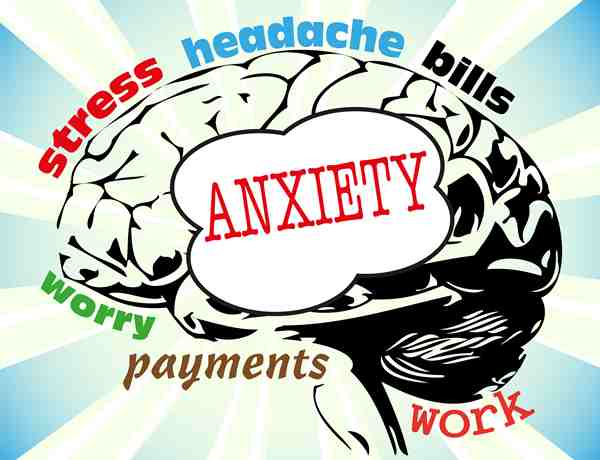“The past affects the present even without our being aware of it.” ― Francine Shapiro
How many of us has anxiety walking with us? Since when has anxiety been walking alongside you? Anxiety is a normal emotion that is experienced by most of us. Anxiety is not a stand-alone emotion. It is usually triggered by other emotions that we may want to suppress. A lot of times, we learn from early childhood to suppress our feelings. For example: If your parents got upset when you were sad, you would learn to hide your sadness. You may learn to cope with anxiety instead. Different events can create anxiety when we do not allow our real emotions to show up.
“Will I pass?” (Perhaps sadness?)
“Will I get a promotion?” (Perhaps anger after putting in so much effort?)
“Will I survive my illness?” (Fear?)
Eye Movement Desensitization and Reprocessing (EMDR) therapy helps us look at the events creating anxiety for us. It helps us to resonate with our innermost feelings as well as our somatic (body) feelings.
What is EMDR therapy for anxiety, and what does it entail?
What Is EMDR Therapy?
EMDR is a widely approved approach by mental health practitioners like psychotherapists, counsellors and psychologists etc. They use EMDR therapy to indirectly treat most forms of anxiety, ranging from mild to chronic.
It’s a phased therapy that helps people suffering from bad memories or traumatic experiences to heal them. EMDR uses brainpower to harness their natural healing power. The process is self-adaptive and works with the client’s wise brain and understanding. EMDR therapy has a vast research base that states it is very effective in alleviating symptoms related to PTSD, panic attacks and other anxiety-related forms.
When a person is experiencing trauma, it can be a single event or continuous; the brain cannot process the activities and retains the trauma in its original form of beliefs and feelings. EMDR replicates Rapid Eye Movement (REM) sleep and process the overwhelming past experiences. Later, the experience is reframed and slotted in the memory network that helps to alleviate anxiety.
Understanding Anxiety And Its Triggers
Exposure to new situations can be one of the main set-off points for anxiety. A new problem may trigger fear, sadness, anger or other emotions that a person is not ready to face—this sets off anxiety as a coping mechanism.
Anxiety can create havoc and knock a person when they are least expecting it. Any condition that feels distressing and intimidating triggers anxiety and can be challenging to control.
It all begins in the brain when you meet a trigger, ranging from simple social engagements to fight or fight situations.
Hormone imbalances are the physiological causes of anxiety. Cortisol working in tandem with adrenaline is the chief culprit that leads to its development. The process is usually involuntary and doesn’t need consent, and often corners an individual to an emptiness of indecision and confusion.
Some of the primary triggers of anxiety can include
- Public speaking
- Meeting new people
- Going for a new job role
- Addressing authority figures
- Feeling insecure around people, especially if they criticize
- Being the centre of focus and attention in a social setting
Types Of Anxiety That Are Treatable With EMDR Therapy
The degree of occurrence of anxiety varies from being mild to chronic. People react differently to social triggers and register the disorder’s degree incongruously. Therapists use EMDR to treat these different levels and types of anxiety, including panic attacks, obsessive-compulsive disorder, social anxiety, and post-traumatic stress disorder.
- Panic attacks
This form of anxiety is often compulsive and occurs out of the blue. The causes of panic attacks result from a distant traumatic experience that comes as sudden and sharp flashes, often unexpected.
Panic disorder is a type of anxiety that involves sudden and intense feelings of terror, often accompanied by physical symptoms such as sweating, trembling, and heart palpitations. Panic disorder is treatable with EMDR through the re-processing of past traumas to provide remissions.
- Past traumatic stress disorder

PTSD occurs after exposure to a significant traumatic event. Like a scar on the skin, it becomes a timely reminder and often comes in unanticipated flashes. Some major traumatic events that cause PTSD include accidents, natural disasters, and raucous assaults that result in significant physical harm.
EMDR therapy is particularly effective in treating PTSD as it helps individuals to process and integrate traumatic memories and reduce the impact of associated symptoms such as flashbacks, nightmares, and hyperarousal.
- Social phobia

It’s the feeling characterized by excessive self-awareness and overpowering anxiety in social settings. Some forms of this social problem’s trigger seem overly minute but lead to expansive feelings of awkwardness and discomfort when associating with large groups of people or new individuals. EMDR therapy can help individuals with specific phobias to reframe their negative beliefs and emotions related to the feared object or situation.
- Obsessive-compulsive disorder

This anxiety disorder is often a result of recurrent thoughts and reiterative behaviours. For example, a patient will usually do things such as counting or cleaning with the hope of making obsessive thoughts recede. This form of anxiety is typically treatable in controlled settings using EMDR therapy.
How Can EMDR Help To Alleviate Anxiety?

Ideally, treating anxiety using EMDR therapy focuses on harnessing the healing ability to move eyes, mimicking the REM sleep. In addition, brainpower is activated to bring the past to the present. Technically, a patient re-processes past events that escalate anxiety when facing triggers in the present day.
It is essential to do EMDR therapy with EMDR trained clinicians. They ensure the client is safe and able to process their experiences in an empathic environment.
An EMDR therapist helps a client to recall their memories or perceptions and replay them. A client may describe it, or they may wish to stay quiet. The choice is for the client to make. The belief and feelings related to the memory or perception are desensitized. This is now added back to our neural memory system that will not have the same past negative feelings attached to it.
EMDR technique harnesses the brain’s healing power to alleviate anxiety by desensitizing the root triggers behind it.
What to Expect During EMDR Sessions for Anxiety Therapy?
EMDR therapy will usually start with the history of the issues you are concerned about. The next step may be to understand how it will help you if the problem is no longer troubling you. Finally, a clear goal motivates you to work in therapy.
Once the issue to work in therapy has been finalized, a therapist will ensure the client has enough resources to cope with the past experiences.
EMDR therapists will decide when you are ready to start work on your bad experience, trauma, or perceptions. They will collaborate with you to take this decision and proceed further from there.
Conclusion
Eye Movement Desensitization and Reprocessing (EMDR) is a brief brain-based treatment that uses the brain’s self-healing ability through guided eye movements or bilateral tapping or sounds. This treatment option for anxiety arising from different past situations is gaining traction among most mental health specialists. It’s a natural and quick way of impacting healing. So, if you are interested in being treated for any of your trauma or bad memories – Do connect with us.












